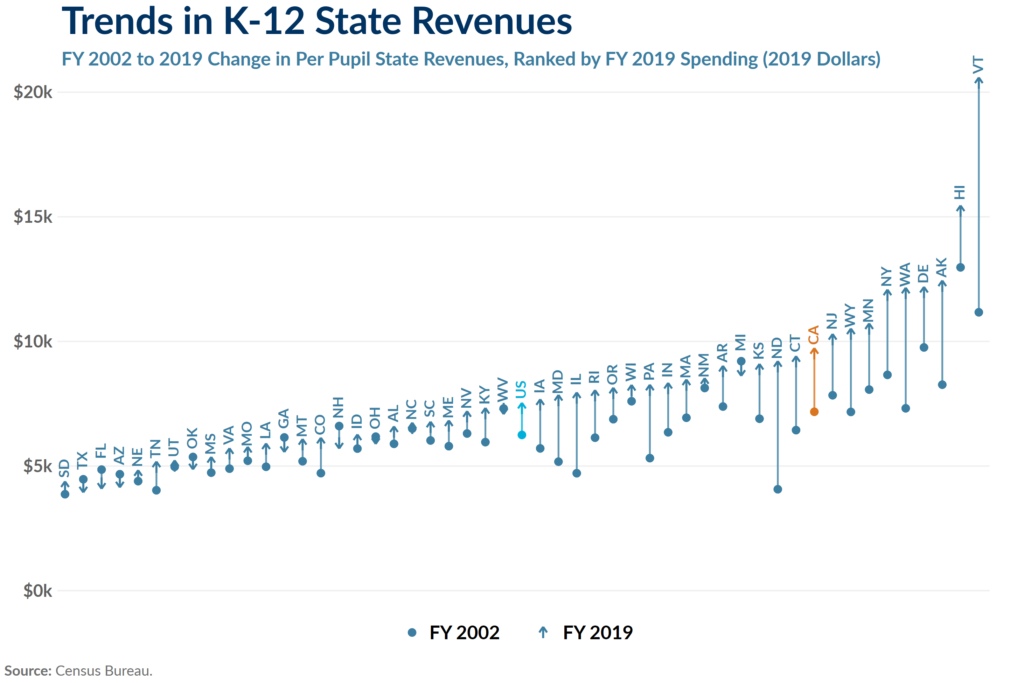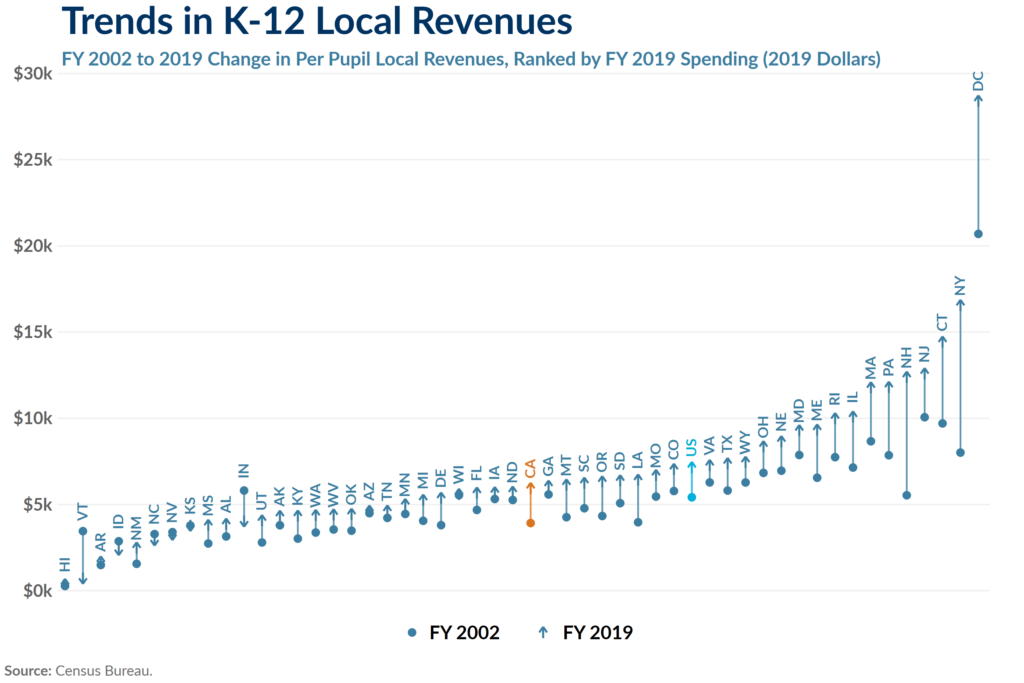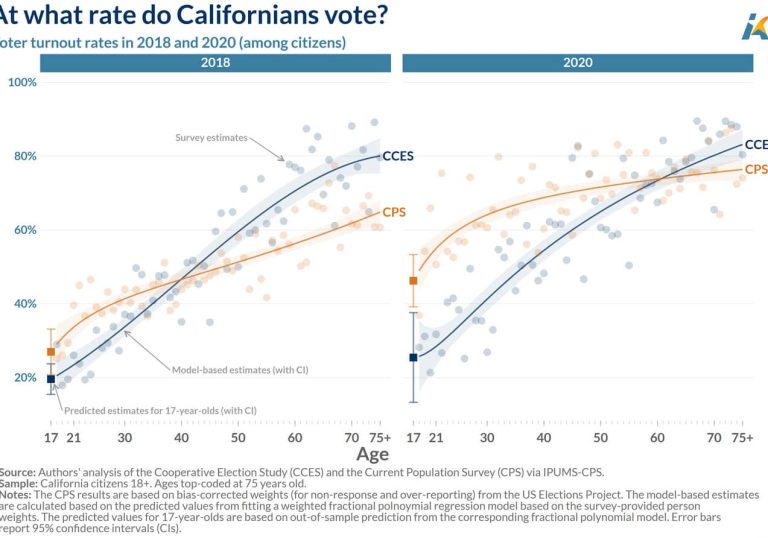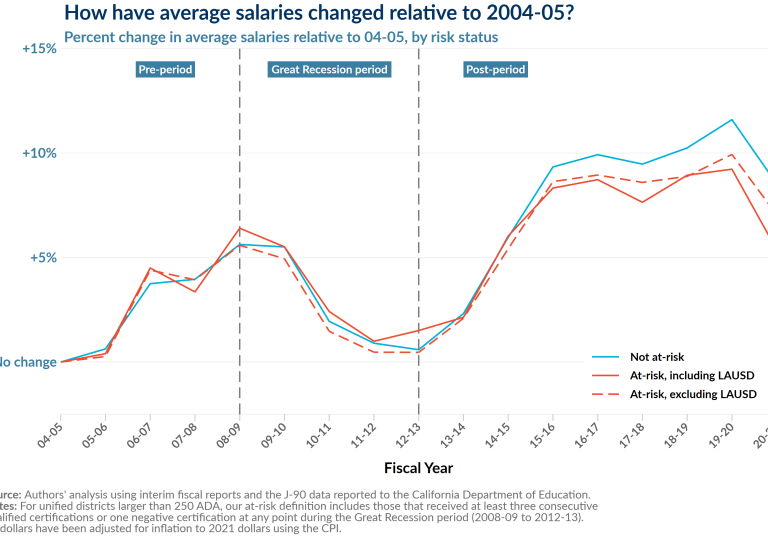- California has made progress to increase overall state revenue for schools since 2002, and as of 2019 ranks in the top ten of all states for per pupil state revenues.
- Yet California still trails the national average in local revenue generation, largely due to the passage of Proposition 13 in 1978, which significantly limited property taxes on all types of property in the state and placed additional limits on local revenue generation.
- For more on how California currently funds its K-12 education system, see our issue brief, Evaluating K-12 Education Finance for California’s Future. For a comprehensive list of statewide propositions beyond Propositions that have affected school finance in the state, see the corresponding technical appendix.












